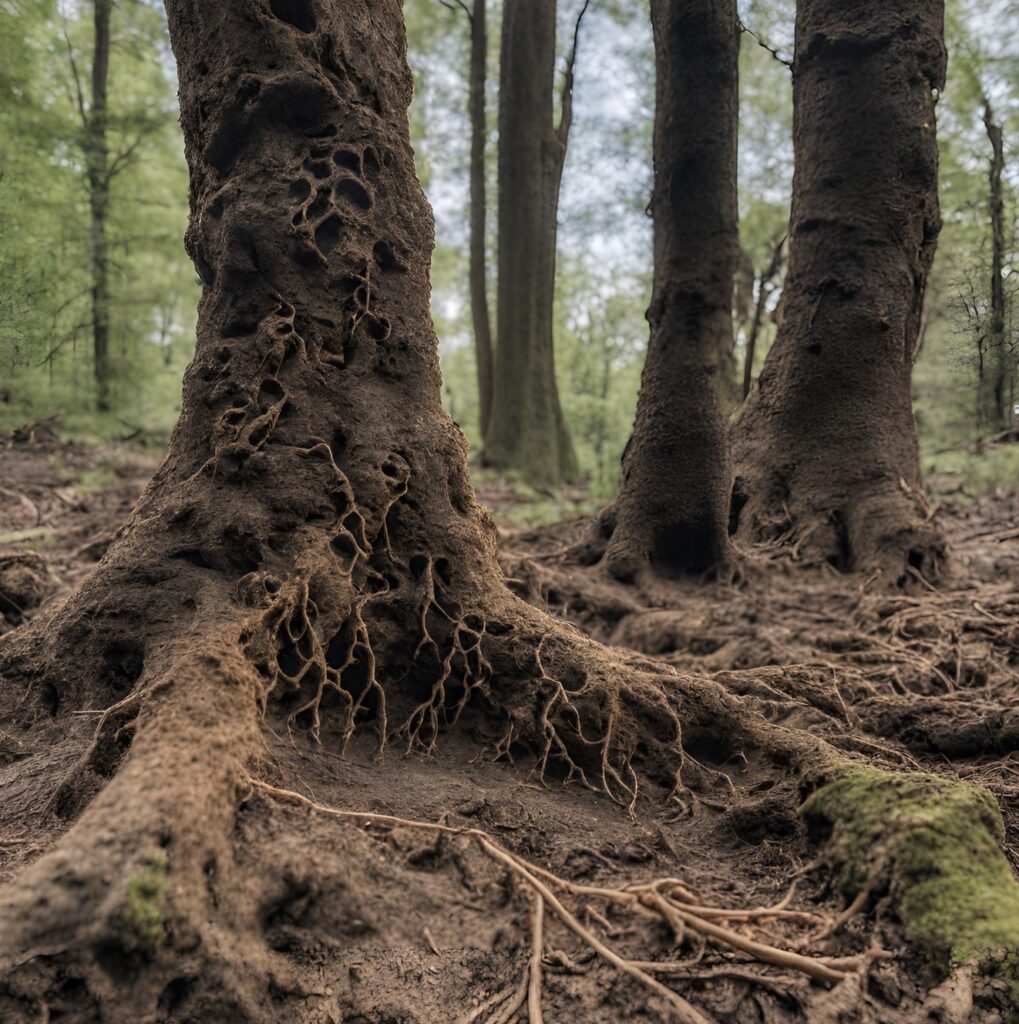In the depths of the forests and beneath our feet lies a fascinating and unknown world, the Fungi kingdom, commonly known as the kingdom of fungi.
Mycelium, the vegetative body of fungi, are underground structures that appear to be simple but actually represent the basis of a surprisingly complex communication system that some scientists have dubbed the ‘natural internet of the Earth.’ Mycelium extends in the form of fine filaments beneath the soil surface, connecting trees, plants, and other organisms.

They may appear invisible to the naked eye, but in reality, they form a vast underground network for the exchange of information and resources that can span enormous areas. It is estimated that in the top 10 centimeters of soil, mycelium represents 450 quadrillion kilometers, approximately half the structure of the galaxy. Dr. Andrew Adamatzky concludes that one of the wonders of mycelium is its ability to communicate similarly to human language, using a combination of electrical and chemical signals to exchange information.
Recent studies have shown that fungi can generate electrical impulses along their filaments, similar to how our neurons transmit electrical signals in our brains. In fact, this form of communication is fundamental to the survival of fungi and their symbiotic relationship with other organisms. On the other hand, one of the most notable associations involving fungi and trees is the formation of mycorrhizas. In this relationship, fungi provide trees with minerals and water, which they obtain from the soil through their extensive mycelium, and in return, trees provide fungi with carbohydrates and other organic compounds produced through photosynthesis.

According to Dr. Robin Wall Kimmerer (2013), mycorrhizas act as a network to distribute the wealth of carbohydrates among the trees, a sort of Robin Hood, providing nutrients to trees that need them most. This exchange is essential for the health and growth of trees as it allows them to access nutrients that would otherwise be inaccessible. In this way, fungi can act as intermediaries, helping trees communicate with each other through the mycelial network. In fact, when a tree needs additional nutrients, it can send signals through the mycelium to request assistance from nearby trees.
There is no doubt that as we continue to discover more about mycelium and its role in underground communication, new research possibilities are opening up. Scientists are exploring how this communication network can be applied to sustainable agriculture, ecosystem restoration, and enhancing forest resilience to diseases and environmental changes.











